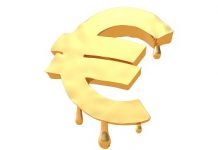Market mood is sourish, appetite is limited. Major US indices fell for a second session on Tuesday, as recession talks, rising Covid cases in the US and Europe, and prospects of renewed lockdown measures in China add a renewed pressure on market sentiment.
Even OPEC’s warnings that demand will exceed supply by 1 million barrels per day next year couldn’t prevent crude oil from falling back to $95 per barrel.
US inflation data in focus
The US CPI is expected to advance to 8.8% in June, from 8.6% printed a month earlier. There are a couple of factors hinting that we could see a softer-than-expected figure at today’s release. The softening food, energy and commodity prices, the improved supply chains, the easing shipping costs and lower purchasing manager indices hint that US inflation may have hit a peak last month, or will hit one soon.
But when, is the million-dollar question. Investors are looking for back-to-back data points to confirm that inflation is finally easing. Therefore, whatever will come out of today’s release will not be sufficient to drive major conclusions. The Federal Reserve (Fed) will still raise the interest rates by 75bp hike this month. Yet, a softer inflation figure could revive the Fed doves for the last three FOMC meetings of the year.
How could the market react?
A further rise in the US consumer prices will certainly revive the Fed hawks today, push the US dollar higher and equities lower.
A softer-than-expected figure, on the other hand, could revive hope that the US economy could experience a soft landing and result in a much-awaited pause in the dollar rally, and a rebound in equities before big US banks start releasing their quarterly results on Thursday.
In both cases, the market volatility will likely remain high, and the visibility likely remain low especially when you add the lower summer trading volumes into that mix.
Parity
It’s a matter of time before we see the EURUSD fall below parity. And that’s bad news for the European Central Bank (ECB).
The lower the euro, the higher the cost of imports as energy, commodities, and higher the pressure on inflation. But, the ECB hawks are nowhere to be found before next week’s ECB meeting, as no one believes at this point that the ECB could surprise with a bigger rate hike. The Ukrainian war, the worsening energy crisis, the slowing European economies, the talk of recession and the risk of a renewed debt crisis will likely keep the ECB on path for a too little 25bp hike next week.
So yes, the EURUSD will likely trade below parity, but how deep it could fall will depend on the strength of the US dollar.












